|
Abit NF7 V2.0 overclocking guide continued...
|
| |
| |
| |
| |
|
Heres an example of the kind of rails you want to be seeing for this guide.
|
| |
| Under full load: |
| |
| 3.3v = anywhere between 3.25~3.40v |
| 12v = anywhere between 11.85~12.35v |
| 5v = anywhere between 4.97 ~5.1v. |
| |
|
You can check these using a program like motherboard monitor, or any hardware monitoring tool your board came with.
However, the H/W monitor on the NF7 is dreadful and way out on vdimm/+3.3v readings
|
| |
|
When I say anywhere between i mean a constant number anywhere in that range of values. One big problem is fluctuations, if
for example the +3.3v rail jumps from 3.25 to 3.35 every single second, this can affect your systems stability.
|
| |
| Vcore and the +12.0v rail: |
| |
|
The NF7 has bad voltage regulation when it comes to vcore. When set at any level the board under volts by 0.01~0.03v. For
example, to use a true 1.65v the bios needs to be set to 1.675v. The problem becomes even worse with vcores over 1.85v.
|
| |
|
This is not as some may assume always a PSU issue as even with a top end PSU with 33AMPS on the +12 rail it still happens.
However you want to look at a PSU that has a +12.0v rail that is constantly below 11.80v. Also when using high vcore
(ie. over 2.0v) with high FSB (ie. over 235) you may encounter posting problems, this is not a power problem but another
odd thing the NF7 tends to do.
|
| |
| Vdimm and the +3.3v rail: |
| |
On the NF7 board the vdimm overvolts period. Thatís a fact. Despite what the bios shows the H/W monitor on the NF7 is
dreadful and way out on vdimm/+3.3v readings. Only way to get an accurate reading is to use a multimeter. This however is
very risky as one slip could frag your board.
| |
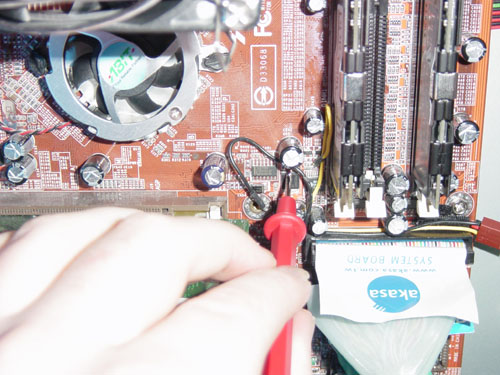
|
| |
|
| |
| I'll make it easy for you, as it is the same with almost all NF7's: |
| |
| 2.9v bios = 3.01v actual |
| 2.8v bios = 2.90v actual |
| 2.7v bios = 2.80v actual |
| 2.6v bios = 2.70v actual |
| |
|
The +3.3v rail is however hard to determine as it can only be verified by checking the board. As my bios always shows the
+3.3 to be 3.33v when it is often at the highest 3.51v and at the lowest 3.26v (when using prime95 torture at 3.20v or more
vdimm).
|
| |
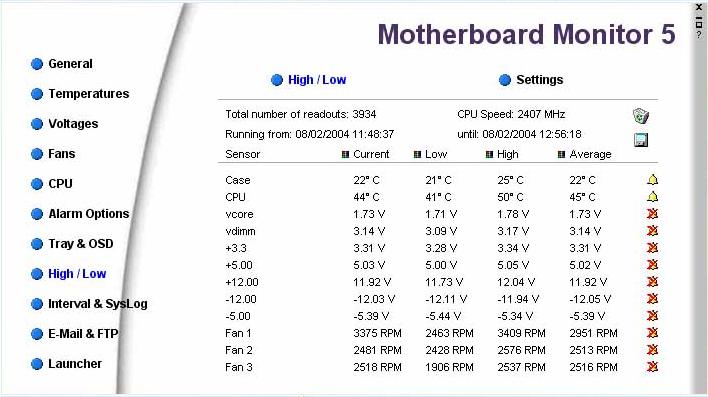
|
| |
|
The +3.3v rail is only really important at high vdimm usually over 3.0 volts. For example my board has it set to roughly
3.25v. If the +3.3v rail is at 3.41 my vdimm is 3.28v, when the rail is at 3.30v it drops to 3.23v and when at as low as
3.26v the vdimm drops down to 3.20v. This is because the vdimm is dependant on how much voltage it can draw from the PSU.
|
| |
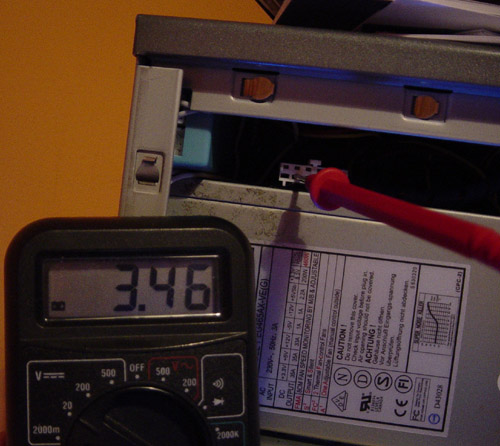
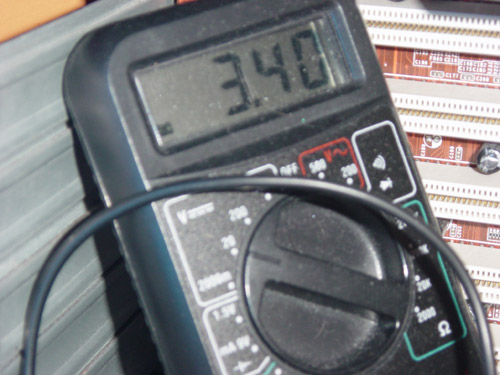
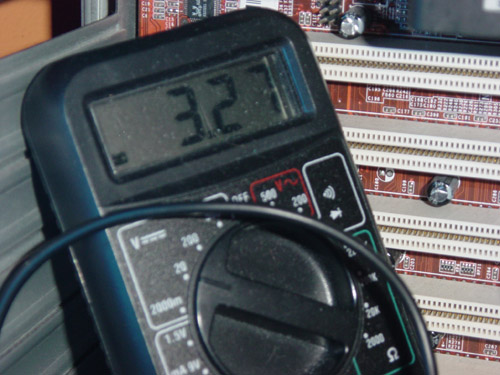
|
| |
| |
|
As a rough guide, if the bios shows over 3.30v and H/W monitor shows over 3.30v under load you should be ok.
|
| |
|
As far as amperage ratings go mine for example is rated as follows and produces the following under load at the following
settings:
|
| |
| CPU @2475 MHz w/ 1.95v |
| FSB @225 MHz w/1.65v |
| RAM @1:1, CAS2.0, 2-2-11 w/3.10v |
| 3.3v (rated at 35AMPS) = Constant 3.33v (multimeter) |
| 12v (rated at 33AMPS) = 11.73~12.04v (h/w monitor) |
| 5v (rated at 35AMPS) = 5.00~5.05v (h/w monitor) |
| |
|
If i ask for more vdimm the +3.3v line drops to 3.26~3.30 under heavy load. The only thing worrying about mine is the +12.0v
rail which flucuates a lot and drops as low as 11.73v on the odd occation. This is not good for me as i tend to use vcore's
over 1.75v which means i need a good strong +12.0v line. This will change however, as i plan to get it fully volt modded.
|
| |
 |
| |